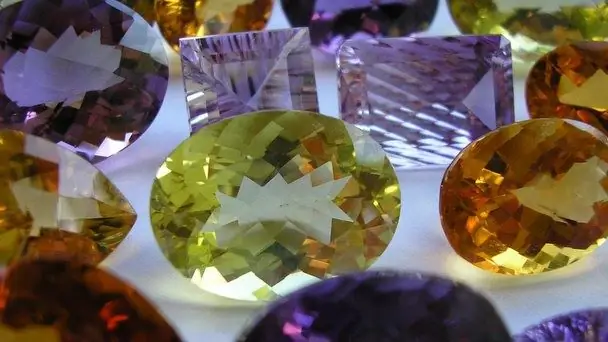Few activities are more profitable than counterfeiting precious stones. This type of fraud has been known since antiquity. And since then, science has stepped far forward, which means that copies of gems are becoming more and more qualitative. Fortunately, you can still tell them apart.

It is necessary
- - strong magnifier;
- - magnet;
- - precise electronic scales;
- - woolen cloth and paper.
Instructions
Step 1
The first sign of a fake is too high quality. Natural gems of a larger size and without defects are very rarely found in nature. This applies to amber, turquoise, rubies and chrysolites. If you are offered a large gem with absolutely no flaws and for ridiculous money, think about it. However, if the price is not ridiculous, there is also a reason to think. Stones of this quality must have a certificate of authenticity and are sold only in serious jewelry stores.
Step 2
The next important criterion is hardness. Almost all gems have a higher density than glass, and therefore will leave a noticeable scratch on it.
Step 3
High density also provides lower thermal conductivity. All gemstones feel colder to the touch than glass imitations. Touch the tip of your tongue to glass and quartz and you will immediately feel that quartz is much colder to the touch.
Step 4
Pomegranate can be easily distinguished from glass with a magnet. Put the product with a pomegranate on an electronic scale and bring a magnet to the stone. If the weight does not change, this is a fake.
Step 5
Amber is easily identified by its electrostatic properties. Rub a stone on a woolen item, and then bring it to finely chopped paper. The paper will instantly be attracted to real amber. Glass has no such properties.
Step 6
Topaz can be easily distinguished by its characteristic "slipperiness". They are very easy to polish and feel silky to the touch, the glass imitation will never be as smooth.
Step 7
A real emerald always contains inclusions inside that resemble small spirals or feathers. Because of them, it seems as if foggy and does not have a strong shine. Examine the stone carefully under a strong magnifying glass. A pure, flawless emerald will surely turn out to be a fake.
Step 8
Real amethysts always have a heterogeneous color and various inclusions. Even in a completely defect-free amethyst under strong magnification, tiny air bubbles, cracks and twisted spirals are noticeable.
Step 9
Natural turquoise is very often counterfeited. The ancient Egyptians began to do this. Now it is possible to accurately distinguish a fake only after a complete spectral, gemological and chemical analysis. Therefore, be guided by the price. Jewelry real turquoise is rare and only in small pieces. Therefore, a product with a natural turquoise insert cannot cost less than $ 200.







